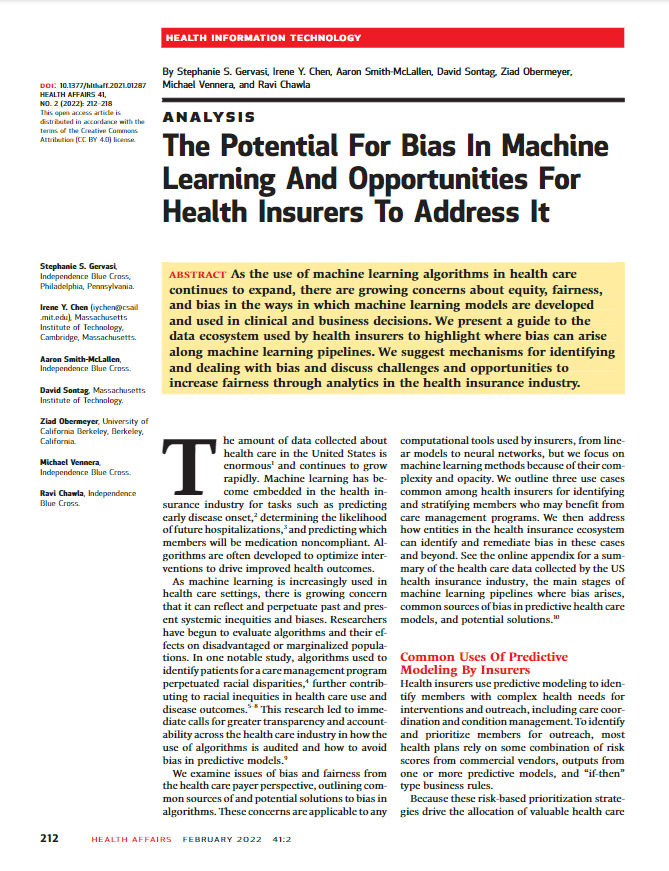Headline
Health insurers can implement strategies to address bias in machine learning and predictive modeling used in care management to help reduce health inequities and racial disparities.
Context
Insurers and health plans often use machine learning and predictive modeling to identify patients with complex health needs for interventions. Researchers have previously identified how algorithms and computational tools commonly used by insurers may contribute to health inequities. This analysis identifies how health insurers’ use of machine learning can create opportunities for bias and outlines strategies to help health insurers address bias and increase fairness.
Findings
Insurers commonly use predictive modeling to prioritize care management, such as predicting the likelihood for chronic disease, hospitalization, or medication adherence. Predictive models can include systemic bias since disparities in access and use may lead to some subpopulations being underrepresented. Health insurers can audit their predictive models for bias, through approaches such as representational fairness, counterfactual reasoning, and error rate balance and error analysis. As an industry, insurers can focus on identifying and remediating algorithmic bias, obtaining and ethically using race and ethnicity data, addressing bad data, and engaging all relevant voices.
Takeaways
Health insurers must recognize the possibility of biases in machine learning and implement strategies to detect and remediate bias.



